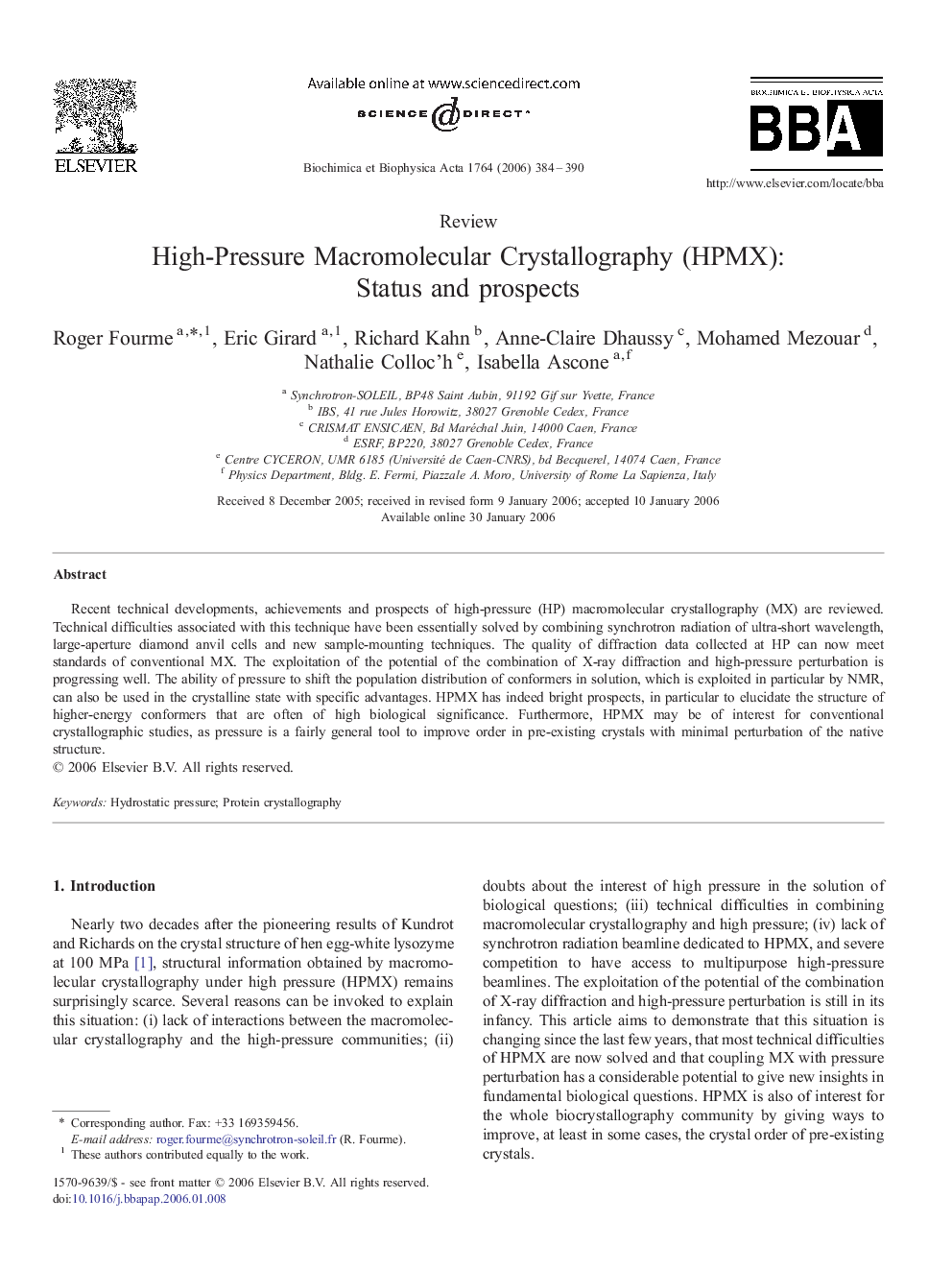| Article ID | Journal | Published Year | Pages | File Type |
|---|---|---|---|---|
| 1178647 | Biochimica et Biophysica Acta (BBA) - Proteins and Proteomics | 2006 | 7 Pages |
Recent technical developments, achievements and prospects of high-pressure (HP) macromolecular crystallography (MX) are reviewed. Technical difficulties associated with this technique have been essentially solved by combining synchrotron radiation of ultra-short wavelength, large-aperture diamond anvil cells and new sample-mounting techniques. The quality of diffraction data collected at HP can now meet standards of conventional MX.The exploitation of the potential of the combination of X-ray diffraction and high-pressure perturbation is progressing well. The ability of pressure to shift the population distribution of conformers in solution, which is exploited in particular by NMR, can also be used in the crystalline state with specific advantages. HPMX has indeed bright prospects, in particular to elucidate the structure of higher-energy conformers that are often of high biological significance.Furthermore, HPMX may be of interest for conventional crystallographic studies, as pressure is a fairly general tool to improve order in pre-existing crystals with minimal perturbation of the native structure.
